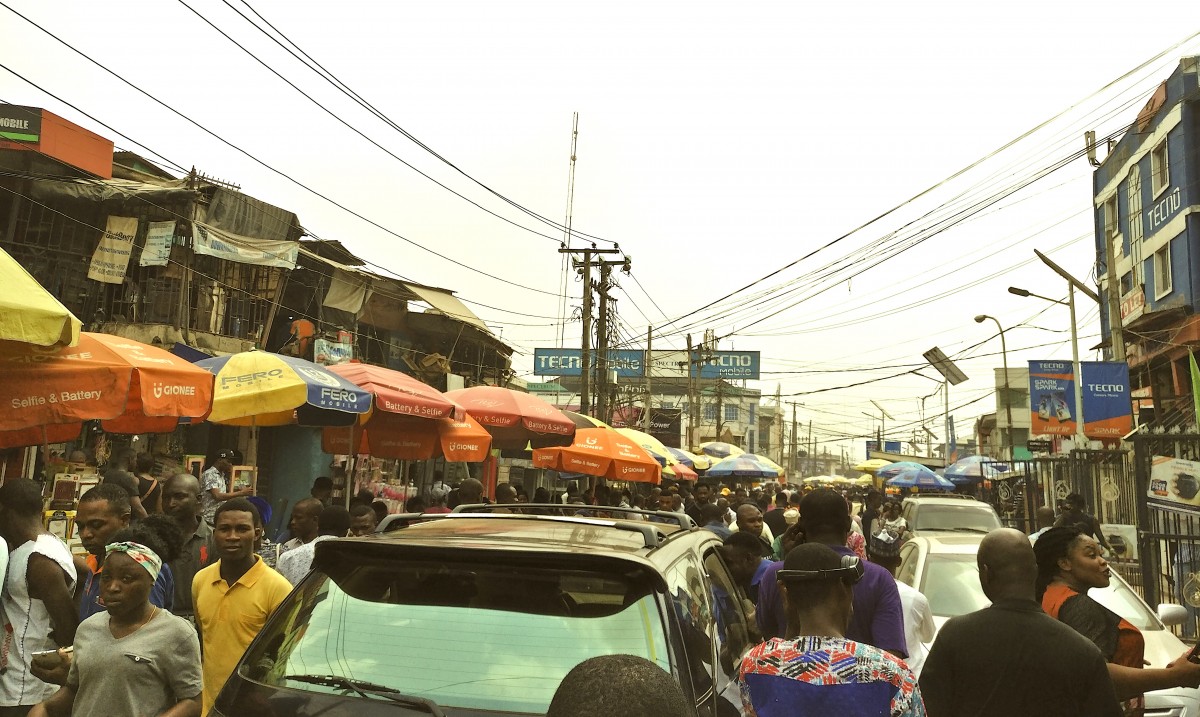As a business builder or manager looking to conduct business in Africa, it is important to get an economic perspective that is both microeconomic and macroeconomic in nature. This means taking a look at the economic trends occurring within the largest economies in Africa, such as Nigeria, as well as the African economy at large.
Gaining a better understanding of the African economy will give you insight into how different trends and challenges will affect your organization’s global expansion plans. Furthermore, this insight will allow you to create a plan that takes advantage of market opportunities as they arise, while also mitigating risk.
A detailed explanation of the African economic past, present, and potential future is highlighted below.
Background
The continent of Africa boasts 54 countries and is home to 1.2 billion people. While each country has its own unique and rich history, there are events and circumstances that have recently defined the continent as a whole. One such story is that of colonization, which has affected many African nations.
After long periods of colonization, in which countries gained their independence between the 1960s and 1980s, the economy held strong, then gradually went into decline for multiple reasons. Some point to the rise of single-party rule in the political arena, which sometimes included military dictatorships, paired with the perpetuation of failed policies as the main reason. This style of politics ultimately led to political instability in several countries, harming their respective economies.
Surmounting Debt
Another reason for the economic decline was that many countries suffered from crippling debt due to foreign loans that were difficult to pay off. These loans were used for infrastructural projects that oftentimes did not come to fruition. The UN Conference on Trade and Development (UNCTAD) estimates that between 1970 and 2002 countries in sub-Saharan Africa received $294 billion in loans, paid out $268 billion to help cover their debt, but still owed $300 billion.
Furthermore, the attempt of some African governments to quickly modernize their economies resulted in the mismanagement of crucial sectors. An underdeveloped industrial sector resulted in the dependence on commodities and service sectors as the main drivers of economic activity. Meanwhile, the lack of industrialization made the African economy more dependent on the importation of foreign goods, such that most of the value was created and captured outside Africa.
In the early 2000s, political stability increased and the economies of several nations began to bounce back. National governments cracked down on corruption, macroeconomic growth plans were successfully implemented, and many Africans began migrating to large cities in search of more lucrative employment opportunities.
Recent Times and Current Status
Between 2000 and 2010, the continent’s GDP began to grow, achieving an average annual growth rate of 5.4 percent, which contributed $78 billion annually to the GDP. When it came to sector performance within the overall African economy, the services industry generated 48 percent of Africa’s GDP growth between 2010 and 2014, which was an increase from the 44 percent it generated a decade earlier. However, growth in Africa’s manufacturing sector was low with a contribution of 4.3 percent to the GDP annually between 2010 and 2014.
Fortunately, utilities and construction expanded significantly to ensure that the industry overall generated 23 percent of Africa’s growth, an increase from 17 percent a decade earlier. Foreign direct investments (FDI) also reached $73 billion in 2014, which was an increase from the $14 billion in FDI achieved in 2004. Meanwhile, between 2010 and 2014, the Resources sector made a negative 4 percent contribution to growth in comparison to the positive direct contribution of 12 percent that occurred during the previous decade.
In 2010, the continent was running a small current-account surplus of 0.4 percent of GDP, but by 2015, that had turned into a deficit of 6.7 percent. GDP growth began to slow down to 3.3 percent ($69 billion) annually between 2010 and 2015, as the price of oil and other commodities fell, causing the African economy to contract.
Economic Slowdown, FDI, and Remittance
The deceleration of Africa’s economic growth was mainly caused by oil exporters and northern countries still affected by the political upheaval of the Arab Spring. With that said, while economic performance was lacking in key economies, the rest of Africa maintained steady rates of GDP growth.
FDI streams to Africa continued to decline in 2016, by 3 percent totaling $59 billion. However, inflows to the continent remained unevenly distributed in 2016, with five countries (i.e., Nigeria, Ghana, Angola, Egypt, and Ethiopia) accounting for 57 percent of the total. Contrary to the influx of FDI, there was an undocumented outflow of money occurring simultaneously in the amount of $50 billion from the continent.
As foreign direct investment dropped across Africa, remittance from the African diaspora was on the rise. Remittances to sub-Saharan Africa grew to $37.8 billion in 2017, according to the World Bank, and are forecast to hit around $39.2 billion this year and $39.6 billion in 2019. Holding the largest population and economy, Nigeria topped African recipients with $22.3 billion in remittances in 2017. However, Liberia was the African country for whom remittances accounted for the highest share of GDP at 25.9 percent.
Short-term Outlook
Economic growth in Sub-Saharan Africa is expected to continue and is forecasted to grow by 3.1 percent this year and to maintain an average growth rate of 3.6 percent from 2019-2020. However, this growth will vary drastically between countries.
With that said, recovery will be slower than previously expected for oil exporters in the Central African Economic and Monetary Community (CEMAC), as they adjust to low external buffers and high debt levels. In countries that are not resource-intensive, activity this year, as well as 2019 and 2020, is expected to remain robust.
Long-term Outlook
The continent’s GDP is set to reach $29 trillion by 2050, with significant growth in the energy, infrastructure, and communication sectors. While the Internet’s contribution to Africa’s overall GDP is relatively low, it is projected to grow to at least 5-6 percent by 2025. In fact, broadband coverage, which is currently servicing 16 percent of Africa’s population, is expected to service 99 percent of the population by 2060.
In regards to infrastructure, Sub-Saharan Africa is the fastest growing regional infrastructure market, despite the fact that the area spends the smallest amount overall on infrastructure. Currently, the region is projected to increase its transport spending to over 11 percent per year between now and 2025. Many believe that this growth will be concentrated in the construction of both roads and ports.
With that said, the lack of proper infrastructure is one of the limiting factors hindering trade within and outside Africa. In an effort to boost intercontinental trade, leaders from 44 African countries signed an agreement to form a $2.5 trillion continental free-trade zone. This agreement highlights the importance of infrastructure development and makes it known that it is a top priority for most African nations. The long-term effects of this contract would be an increase in industrial development and the advancement of economic diversification.
For the energy sector, as the economy quadruples in size and Africa’s population reaches 1.75 billion, the demand for energy is expected to grow by around 80 percent by 2040.
The share of renewables is set to grow to 44 percent, while investment in the power sector reaches $46 billion annually, with more than half of the funds being invested in transmission and distribution.
To unlock growth in Africa, companies should look for opportunities in the following sectors: wholesale and retail, food and agri-processing, healthcare, financial services, light manufacturing, and construction. These sectors are characterized by high growth, high profitability, and low consolidation – which bodes well for any corporation looking for high growth markets.
As the African economy continues to grow and its population becomes more urban, skilled, and productive, multinational companies looking for new areas of expansion have the opportunity to create and capture value. This can easily be achieved by investing in talent, maintaining a long-term perspective, and building strong local partnerships to successfully grow your company in the next few decades.
Conclusion
In order to succeed as a new entrant in Nigeria or any of the African markets, you will have to take the short-term and long-term predictions of the African economy into consideration. Doing so will help you become a formidable competitor within both the national and continental market landscape.


